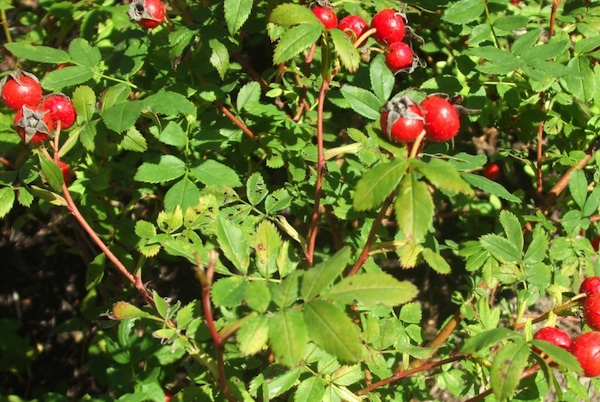
Rose hips are the seed pods of roses. (C) Jo Ellen Meyers Sharp
The National Garden Bureau and the Herb Society of America have teamed up to name 2012 Year Of the Herbs.
This is the first time the not-for-profits have partnered in their missions to promote gardening and educate people about growing plants.
To guide gardeners in their selection, the herb society offers its top 10 list, which members voted on at their 2011 annual conference.
Among the winners, these three are easy to grow from seed: sweet basil (Ocimum basilicum), chives(Allium schoenoprasum) and dill (Anethum graveolens). Buy these seven plants at the garden center: Greek oregano (Organum vulgare hirtum), bay (Laurus nobilis), rosemary (Rosmarinus officinalis), common thyme (Thymus vulgaris), parsley (Petroselinum crispum), common sage (Salvia officinalis)and lavender (Lavandula).
For detailed info, download [download id=”56″ format=”2″] developed by the Herb Society of America and the National Garden Bureau.
Another group, the International Herb Association, has named 2012 the Year of the Rose, a plant not frequently thought of in the same category as basil or thyme.
But rose petals are edible and the seed heads, called hips, are a common ingredient in teas, herbal medicines and natural vitamins. Jim Long’s How to Eat a Rose is a helpful guide for any cook (www.longcreekherbs.com).
“Here in America, we tend to look upon the rose as just a flower in a vase,” Long wrote in the 2004 paperback. “Roses are used for lotions and rinses for the body, too, but it their use in foods that is fascinating to me. Rose ice cream, (the sweet beverage) sharbet, rose wine, rose vinegar, rose candies, jams and jellies are all an important part of life in many cultures.”
Florist roses are not a good choice because they have been treated with various pesticides. Long recommends organically grown roses, especially heavily fragrant, old fashion or antique varieties.
Denise Schreiber also has a new flowers-for-food spiral-bound book, Eat Your Roses: …Pansies, Lavender, and 49 Other Delicious Edible Flowers.